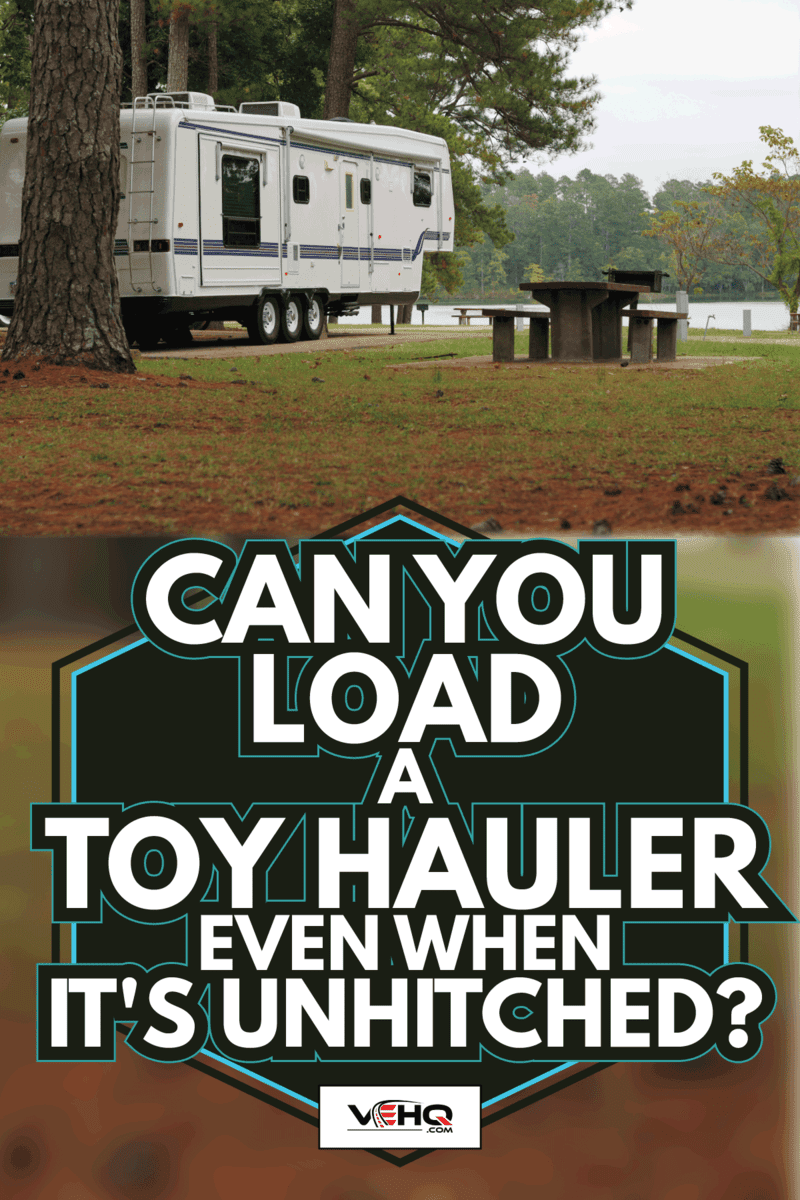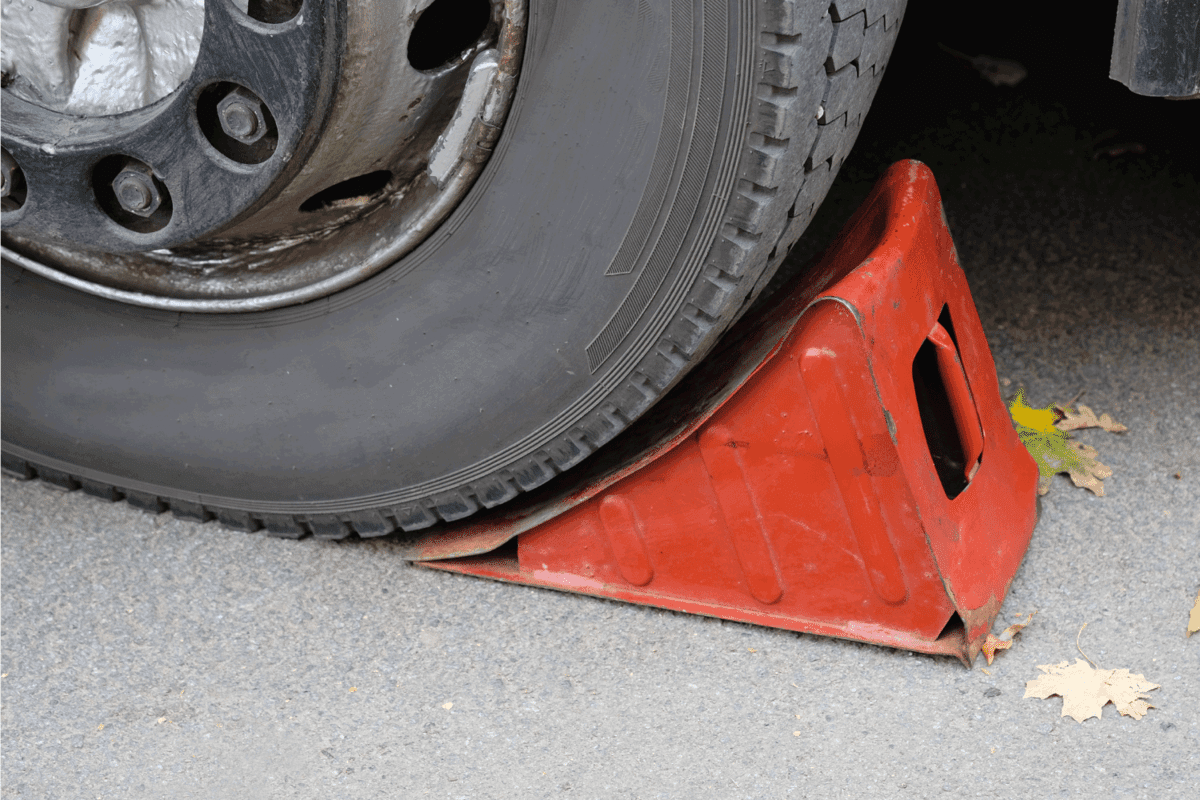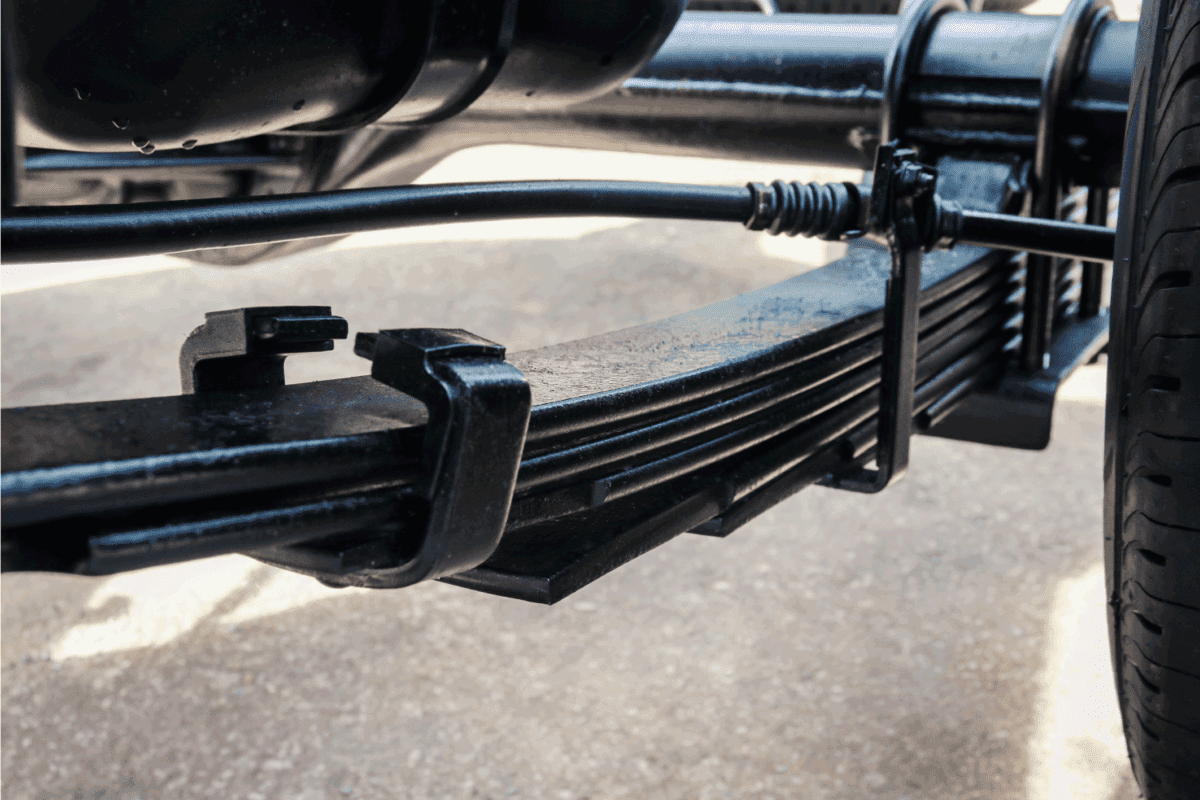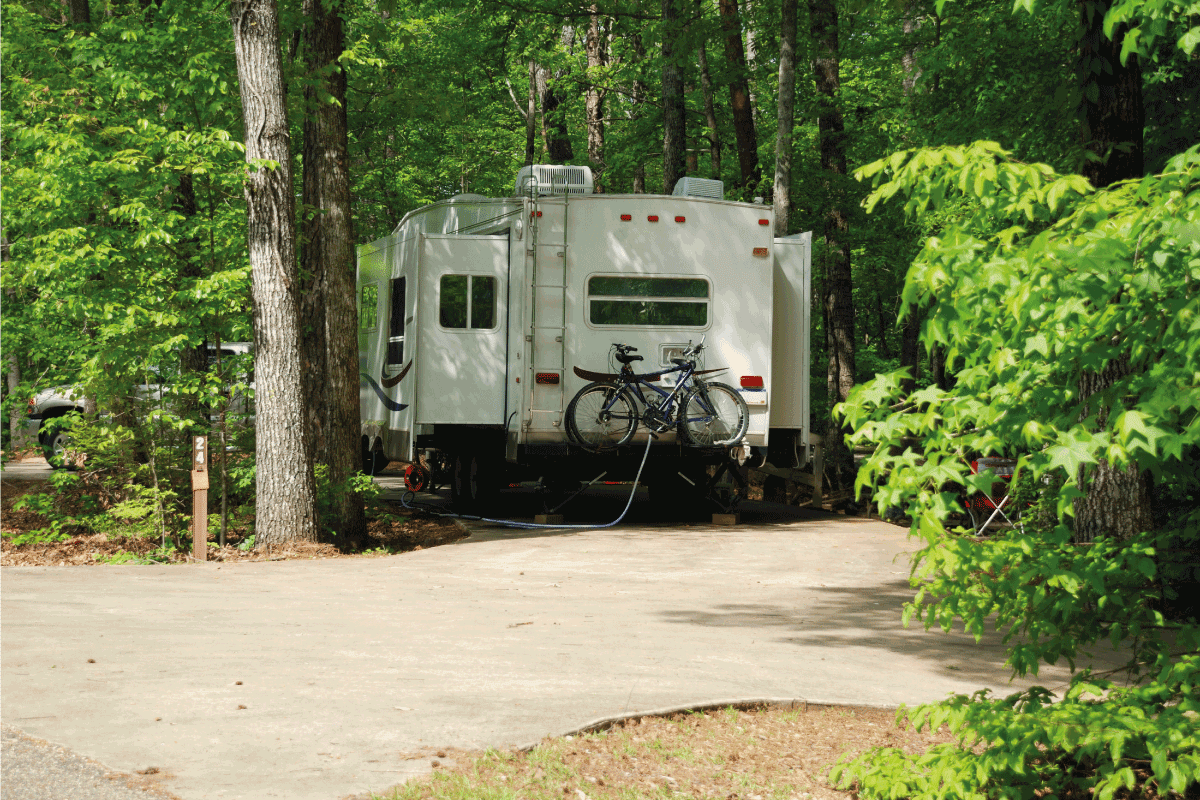Part camper, part garage on wheels, toy haulers are great options for getting out in nature and having some fun. Most people load their toy haulers while they're hitched, but can you load an unhitched toy hauler? If you've ever wondered this yourself, don't worry. We've done the research and have the answer for you:
It is safest to load and unload your toy hauler when it is hitched and the tow vehicle is in park with wheels chocked. If you want to load your trailer when it is unhitched, be sure to take extra precautions:
- Get the toy hauler on level ground
- Level the toy hauler with the tongue jack
- Set stabilizer jacks
- Chock all the wheels on both sides
If you have done these steps, you will be able to load your toy hauler when unhitched. Always load your toy hauler slowly and carefully, making sure to distribute weight evenly on the left and right and keeping most weight above or in front of the axle.
Let's look at the process of loading an unhitched toy hauler in some more detail. We'll also see some great options on what to load in your garage and whether it's a good idea to lift your toy hauler. Read on to learn all about it!

How to Load an Unhitched Toy Hauler
Tons of toy hauler veterans offer their advice on how to load an unhitched toy hauler. The most important aspect is that the toy hauler is secure during the process. Let's take a look at each of our steps for securing your unhitched toy hauler in a little more detail:
Get the toy hauler on level ground
While the ground doesn't have to be perfectly level, you want it to be as flat as possible. This is true even when your toy hauler is on a hitch, but especially important when it isn't.
Level the toy hauler with the tongue jack
Even when on perfectly flat ground, you'll want to level the toy hauler with the tongue jack before using the stabilizer jacks. Use a block if necessary.
Set stabilizer jacks
Toy haulers and other campers use stabilizer jacks to keep them steady at camp. Lower the rear stabilizers first. After they make contact with the ground, continue to lower them for just one or two seconds. Repeat the process with the front stabilizer jacks.

Chock all the wheels on both sides
Chocks are wedge-shaped blocks made of sturdy materials that keep wheels in place in case other systems fail.
In general, it is only necessary to chock wheels on the downhill side, but when loading a toy hauler, it is best to chock both sides of the wheel as the process may rock the toy hauler both ways.
Make sure you center the chocks and line them up with the wheels. Be sure it is in contact and snug with the tread of the wheels.
If you need wheel chocks, these heavy-duty chocks are perfect for even the largest toy hauler:
Click here to see these RV wheel chocks on Amazon.
What Fits in a Toy Hauler?
Some toy haulers are large enough to fit a car, while others have much less cargo area. Even the Sylvan Sport Go, the smallest toy hauler on the market, can fit most ATVs.
While choices for your toy hauler cargo are almost endless, here are some popular options:
Bikes
From mountain bikes to motorcycles, you can have plenty of fun on two wheels, and toy haulers are a great way to get them around.
Motocross and enduro bikes are especially popular for offroading. Motocross bikes are dirt bikes designed for racing. They're lighter and have great acceleration, but they can get uncomfortable for longer rides. Enduro bikes are heavier and more comfortable to ride for longer periods. They also handle better on the road, so they're a good all-in-one bike.
ATVs
ATVs (short for "all-terrain vehicles") come in different styles. Four-wheelers, or four-by-fours, are those ATVs that use four- or all-wheel drive exclusively. Quads also have four wheels, but they are usually rear-wheel drive.
Definitions aside, ATVs are exciting ways to enjoy offroading on four wheels and a common resident of toy hauler garages.
UTVs
Another vehicle with many names and styles, UTVs, side-by-sides, and dune buggies, are similar to ATVs in many ways. The main difference is that they include a cab frame with a roll cage. They also usually include seats for passengers, sometimes as many as six people!
The roll cage makes these safer for more intense offroading, but they're also heavier and larger than ATVs. For this reason, it's important to make sure your toy hauler garage can accommodate your UTV. For help finding the right one and advice on securing your UTV, check out our article "11 Toy Haulers That Can Fit a Side by Side (UTV)."
Watercraft
Whether by the sea or a lake, you're sure to find toy haulers full of watercraft too. Canoes and kayaks are light and narrow, but they are sometimes longer than toy hauler garages. Make sure you measure first and consider loading them in a roof rack to save on garage space.
Boats and jet skis can also fit in toy haulers but require some extra consideration. It's often best to load these in toy haulers on a trailer, so make sure your garage has ample space and weight capacity for both the watercraft and the trailer.
You can learn about popular options for toy haulers in our article, "How Much Weight Can A Toy Hauler Carry?" It includes eleven examples of awesome toys to help get the most out of your toy hauler.
How Do you Load a Toy Hauler?
Once you've set up your toy hauler and secured it as described above, you are ready to load your toys. If you are loading lightweight cargo and your toy hauler has a long ramp, it is easy to load many things by just walking them up the ramp.
For heavier vehicles, such as ATVs and UTVs, it is best to drive them in. Be sure to go slowly so you don't accidentally speed up as you get over the top of the ramp!
For some items, like jet skis, it's best to load them on a trailer. You can do this by backing the trailer in, although this process is precarious and takes a lot of practice. If your garage is outfitted with a sturdy winch, you can use that to load a trailer in the garage as you guide the trailer yourself.
Regardless of what cargo you're hauling, you'll want to follow some guidelines:
Distribute weight equally between left and right
If the weight in your toy hauler isn't balanced, it will be harder to handle on the road.
Load most of the weight over or in front of the axle
Try not to load a lot of weight behind the axle of your toy hauler, as this will affect your towing experience and can even be dangerous at high speeds. Aim for a 60/40 balance, with 60% of the weight in front of the axle and 40% behind it.
Secure your cargo with sturdy ratchet straps
Using D-rings or other structural supports, secure your cargo in the garage. Make sure there is tension in all directions so the cargo doesn't slide around as you drive.
Use heavy-duty ratchet straps, such as these from Rhino USA that have a break strength of 1,823 lbs.
Click here to see them on Amazon.
Can you Lift a Toy Hauler?
If you're looking for extra ground clearance, it is possible to raise your toy hauler. The most common way to accomplish this is called "flipping the axles." In truth, you don't flip your axles but move them from above the leaf springs to below them. You then gain the diameter of your axle and the thickness of your leaf springs in clearance.

It is important to note that, while this process will gain you a few inches more clearance, it will also affect the way your toy hauler handles. The weight of your trailer will ride higher, making it more prone to swaying. The process also involves major work on your trailer that can create serious problems if incorrectly done.
For these reasons, we advise you not to try this on your own and caution even getting a professional installation. If you want to understand the process and the problems of doing it incorrectly, see more in the video below:
How Big is the Garage in a Toy Hauler?
As we've seen, toy hauler garages come in a variety of sizes. Typically, they fall between 10' and 14' in length, although some are much larger, like the 20'7"-long garage in the Momentum 30G from Grand Design.
If you want to see more toy haulers with massive garages, check out our article, "What Toy Haulers Have the Largest Garages." There you can see more examples of toy haulers with ample space and can also learn about some toy hauler motorhomes.
Remember that size isn't the only thing that matters. Always check the available cargo weight of your toy hauler and make sure you don't exceed it. Doing so will add wear and tear to your trailer, make it more difficult to handle, and can even increase your liability in case of an accident.

In Closing
While loading your toy hauler while it's hitched is always your best bet, we've seen how you can safely load it unhitched too. Following this advice will keep you, your toy hauler, and all of your toys safe and ready for the road.
Happy hauling!


